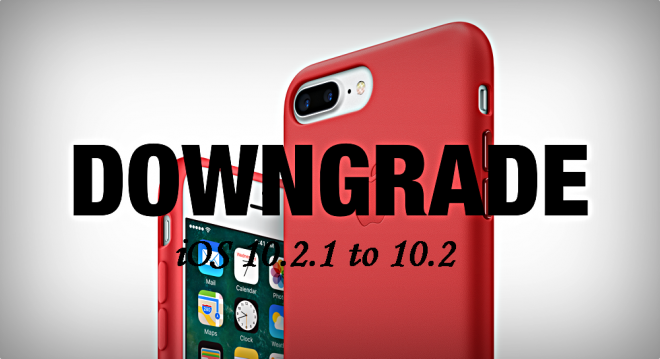
Apple has recently rolled out the latest iOS 10.2.1 update with minor bug fixes and key security improvements. However, the dreaded 30% battery bug continues to torment users as the new update fails to address the issue wherein the handset shuts down abruptly with 30% battery charge still remaining.
Apple has recently been accused of failing to "meet basic consumer needs for normal wireless communication" by the Chinese government and its efforts to include a battery diagnostics tool with iOS 10.2 has actually made the battery bug even worse.
Consequently, all those users who want to downgrade from iOS 10.2.1 to iOS 10.2 may go ahead and follow our step-by-step guide posted below. Apple has not yet closed the signing window for iOS 10.2 and hence it would be another good reason for your downgrade.
Besides, if you have already saved the SHSH blobs for iOS 10.1.1, then you will get another opportunity to restore or roll back to the last jailbreakable iOS firmware after downgrading to iOS 10.2.
If you have accidentally updated to iOS 10.2.1, you can still downgrade to the previous release and make way for a probable iOS 10.2 jailbreak as the prolific hacker, Luca Todesco, has shown that iOS 10.2 could still be vulnerable to KPP exploit used in iOS 10.1.1 jailbreak.
iOS 10.2 IPSW download links
iPad Air 2 (6th generation WiFi)
iPad Air 2 (6th generation Cellular)
iPad Air (5th generation WiFi + Cellular)
iPad Air (5th generation WiFi)
iPad Air (5th generation CDMA)
Download iTunes
Download iTunes 12.5.5 for Windows and Mac
Steps to downgrade iOS 10.2.1 to iOS 10.2 on iPhone, iPad or iPod Touch
Step 1: Ensure you have installed the latest version of iTunes on your Mac or Windows PC, using the download links provided.
Step 2: Download iOS 10.2 IPSW file from the links provided (above) for your specific model of iPhone, iPad or iPod touch.
Step 3: Disable the Find My iPhone feature on your device. Go to Settings > iCloud > Find My iPhone, and verify that the option is toggled off.
Step 4: Connect the iOS device to your Mac or PC via USB cable and launch iTunes.
Step 5: Boot the device into DFU mode by holding down both Power and Home/Touch ID buttons on the device for 10 seconds. Release the Power button but continue holding the Home/Touch ID button until the device enters DFU mode. An alert should pop up in iTunes notifying you that the device is now in Recovery Mode.
Step 6: When your device appears to be successfully recognised in iTunes, press the Option key on the Mac or the SHIFT key on a Windows machine, and then hit the "Restore iPhone..." button.
Step 7: When asked, browse and select the iOS 10.2 firmware file that was downloaded earlier. iTunes will now go through the process of installing a fresh version of iOS 10.2 to your device.
Step 8: Do not disconnect the device from the computer until iTunes confirms that the restore process is complete or the device has rebooted into the welcome screen.
Step 9: You can now restore your backup files for iOS 10.2 or older firmware that you created earlier. Any data backups taken in iOS 10.2.1 will not work after you downgrade back to iOS 10.2.










